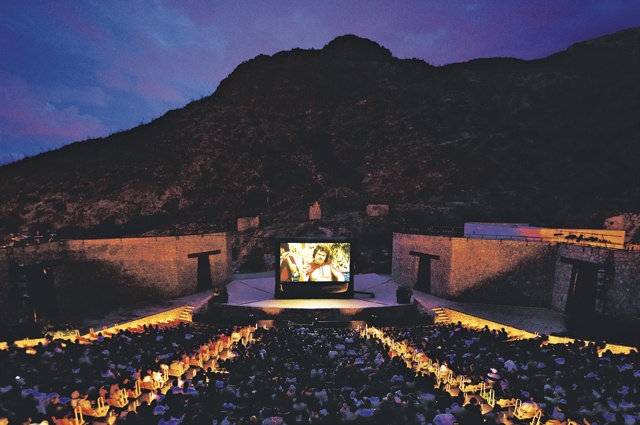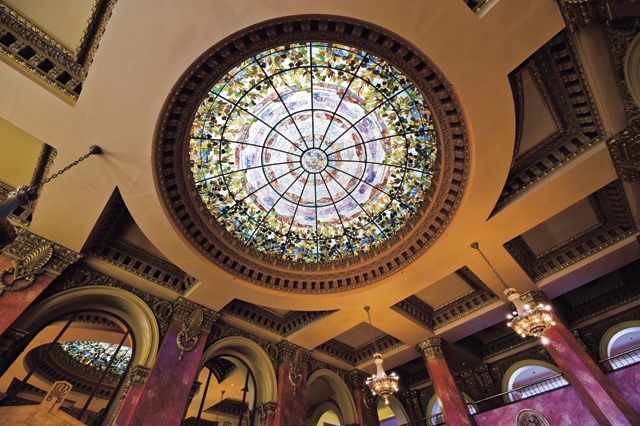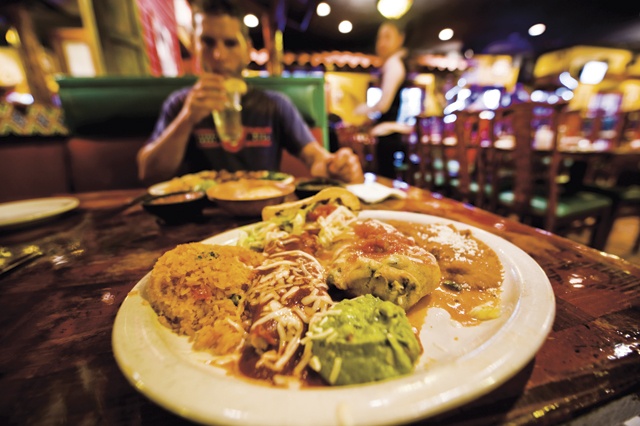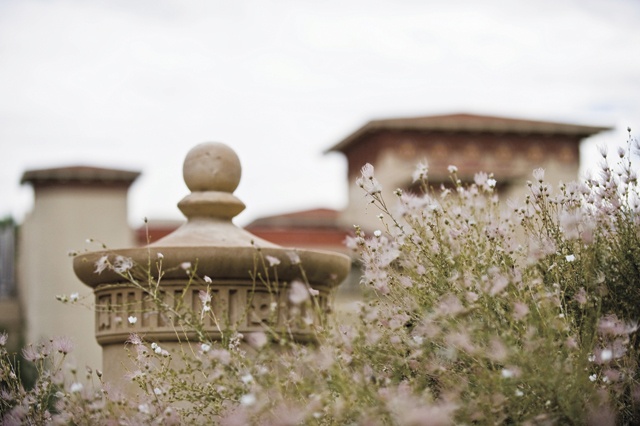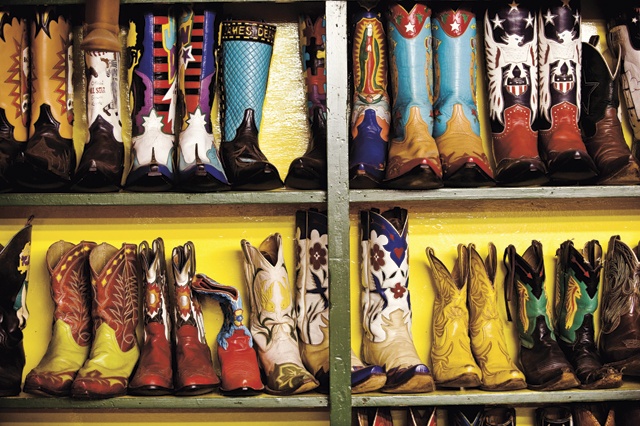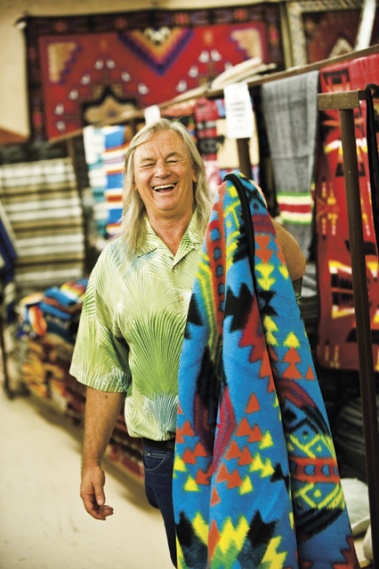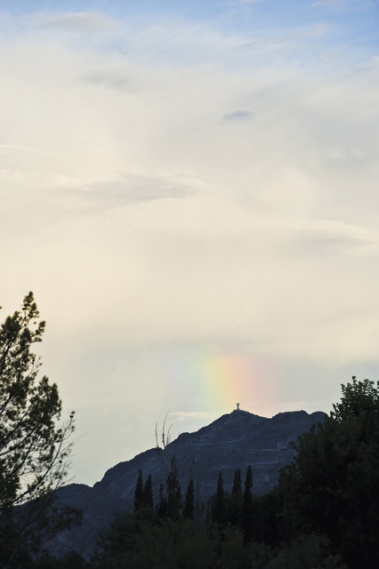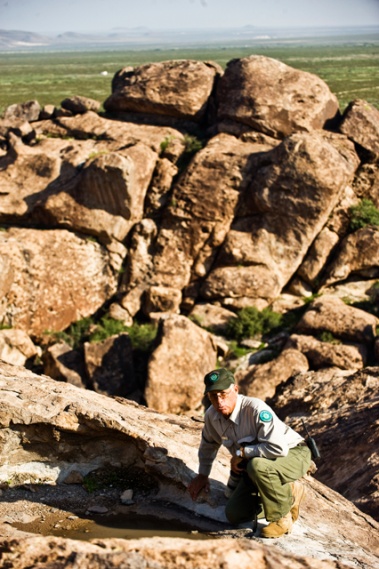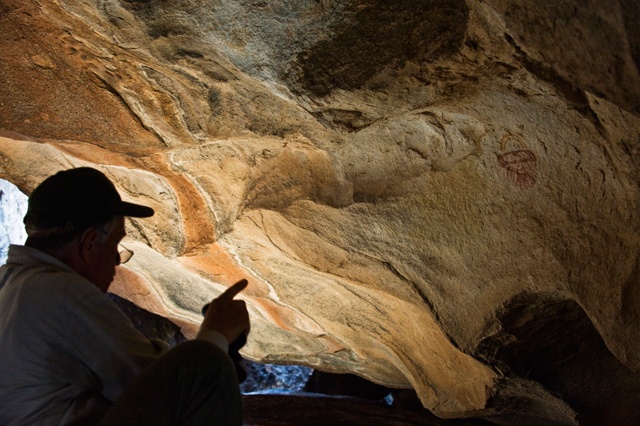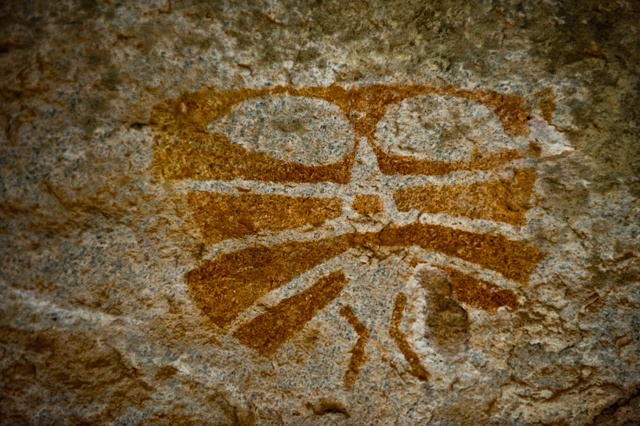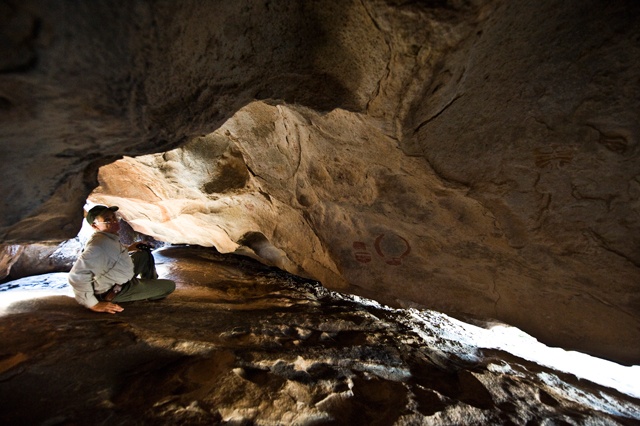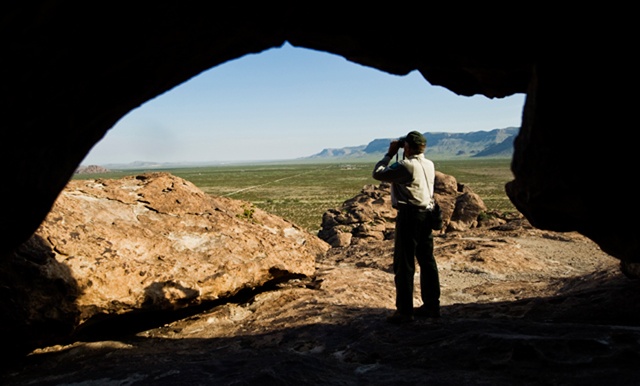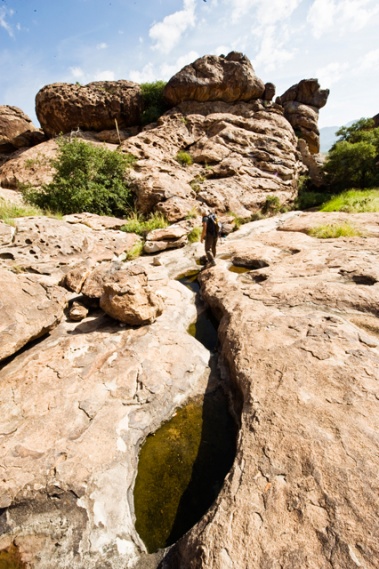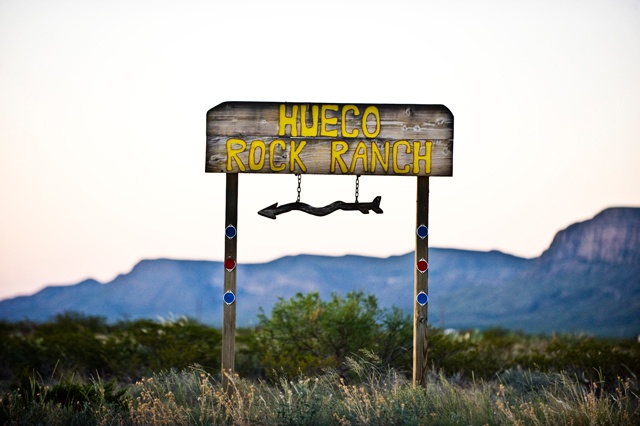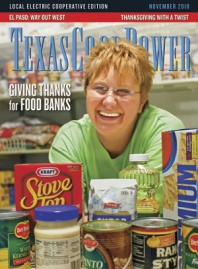Out in the West Texas town of El Paso, I fell in love with Texas’ largest border city. With a backdrop of mile-high peaks spiking the desert air, El Paso combines friendly, big-sky Texas, an entire mountain range within city limits, and the most exotic University of Texas campus imaginable.
Operating in Mountain Standard Time—one hour earlier than Central Standard Time, which most of Texas uses—at the state’s westernmost tip, El Paso offers low-cost fun and high-grade adventures for families and shoppers, history buffs and hikers.
Rising north of the curving Rio Grande, El Paso traces its beginnings to 1581 when Spanish explorers approached the river from the south and saw a pass between two mountain ranges rising from the Chihuahuan Desert. The site they named El Paso del Norte—the Pass of the North—someday would hold two border cities: Ciudad Juárez on the river’s south bank, in Mexico; and El Paso on the north bank, in Texas.
Spanish adventurers were followed by missionaries and travelers on El Camino Real—the Royal Road. In 1827, Juan María Ponce de León became the first owner of the site now called El Paso when he acquired about 215 acres of mud flats on the north bank of the Rio Grande to farm and develop. El Paso initially was made up of tiny American trading settlements—Magoffinsville, Franklin, Concordia and Hart’s Mill—beginning in 1849.
My husband, Guy, and I arrived in El Paso late one December afternoon on Amtrak’s Sunset Limited. We stepped off the train into Union Depot, a lofty, deep-red brick station that opened in 1906, ready to explore this colorful Texas city.
The next morning, we headed to sprawling Fort Bliss, which is scheduled to be the headquarters of the U.S. Army’s 1st Armored Division. In the midst of modern Army hustle, we found the Old Fort Bliss Museum, an authentic, tranquil replica that represents life in 1857 at the frontier fort built to protect settlers and wagon trains. We wandered through the old fort’s store stocked with tallow lanterns and cast-iron pots and into the adjacent barracks room. A checkerboard with checkers made of corncob slices sat ready for soldiers whose canteens, one-piece long johns, boots and banjo were nearby. The saddlery shop, redolent of leather bridles, along with the carpentry and blacksmithing exhibits, revealed the self-sufficiency necessary during that era. Old Fort Bliss even brought a teaching moment to the restrooms where posters illustrate how the 1857 three-holer garrison latrine was part of the evolution of port-a-potties.
South of Fort Bliss, weathered crosses, worn-out angel statues and forlorn, sandy plots spread across the vast Concordia Cemetery. Markers crowding the grassless graves unveil a condensed history of early El Paso. Here are the resting places of gunslinger/El Paso lawyer John Wesley Hardin and the Chinese-American workers who built the southern transcontinental railroad route that reached El Paso in 1881. Here, too, you’ll find the graves of Polish cowboys, cattle rustlers, miners and the sadness that still surrounds the section of tiny crosses—children who died in the 1917-18 influenza epidemic.
Enthusiastic guides to El Paso’s frontier era greeted us at the Magoffin Home State Historic Site, an 1875 example of Territorial architecture and a Mexican hacienda-style home built for a culturally blended family. Tours of the 5,000-square-foot home take in several rooms, including some with 14-foot-high ceilings, that are complete with period furnishings and decorations and the minutiae of life: chamber pots, an old-fashioned corset and a 3-D stereopticon (a precursor to the View-Master).
Jumping more than a century ahead, we walked into the bistro atmosphere of the Pot-Au-Feu International Restaurant for a late lunch. Although tempted by the homemade corned beef, we followed the appetizer of calamari and roasted tomatoes with the savory smoked duck breast and the lamb burger. Then we were off on a walking tour of downtown, starting underneath the stunning, huge Tiffany stained glass dome that tops the 1912 Camino Real Hotel’s Dome Bar. Architect Henry Trost, who died in 1933, designed the hotel and many other downtown buildings here about 100 years ago, a fact that lends harmony to the area’s structural environment.
Throngs of Mexican shoppers milled around the southernmost part of downtown, near one of El Paso’s four international bridges. Ready to shop ourselves, we headed west to roam the two acres of the El Paso Saddleblanket Co. and its wildly entertaining collection of Southwest borderland décor and curios: a cornucopia including boots and baskets, saddles, sheepskins and sombreros.
From our hotel that evening, we looked downhill, geographically and emotionally, to embattled Ciudad Juárez, twinkling forlornly across the river. Drug cartel wars in Juárez have decimated the city’s economy, forcing dozens of Juárez restaurants and stores to relocate in El Paso.
Although its neighbor across the border is ravaged by violence, El Paso is one of America’s safest cities. According to a 2009 report from CQ Press, a leading publisher on American government and politics, El Paso trails only Honolulu for the nation’s lowest crime rates among cities with populations of 500,000 or more.
We felt totally safe, totally in Texas, as we walked and drove El Paso’s neighborhoods, shops and parks.
The next morning, luminous Renaissance paintings by Sandro Botticelli and Filippino Lippi held us spellbound inside the El Paso Museum of Art. Suzanne Klotz’s multimedia “La Migra/Border Patrol” captivated me, as well, with its complexity of action heroes, crosses, milagros (tiny votive offerings), Huichol Indian bead work and Mexican dichos, or sayings.
At Insights El Paso Science Museum, I stepped inside a kaleidoscope, played with a gyroscope, and changed my shape—dropping 30 pounds and growing a foot taller with the dials of a fun-house mirror. Between manipulating brain teaser puzzles, trying weather experiments and eyeing a fossilized dinosaur egg, kids and adults become animated: “Hey! Come see this!”
Farther west, The University of Texas at El Paso is a mirage of Himalayan architecture wedged in the foothills of the arid Franklin Mountains and not looking out of place. The Bhutanese-style buildings (a fixation of the college president’s wife in 1914) give the one-time mining college a serene and appealing coherence, which is underscored by a large prayer wheel, given by the people of Bhutan, and metal temple bells that tinkle in the breeze. In contrast, directly across the Rio Grande from UTEP, a hodgepodge of houses crowd the unpaved hillside streets of Juárez.
UTEP’s Chihuahuan Desert Gardens proved to me that native plants—sage, ocotillo, turpentine bush, aromatic sumac and various cacti—create attractive, low-maintenance landscapes. The adjacent Centennial Museum showcases regional wonders: a 2-billion-year-old local algae fossil, prehistoric mastodons and Huichol effigies.
El Paso’s Transmountain Road sped us through the arid Franklin Mountains, the only American mountain range wholly within city limits. From Smugglers Gap at 5,280 feet, we descended to the El Paso Museum of Archaeology. Offering an easy introduction to archaeology, the modest but engaging museum displays artifacts and dioramas of regional Native American cultures, from prehistoric to the present. We roamed the facility’s nature trails edged with pink-striped rainbow cactus with great care: The desert gardens occupy a former Fort Bliss artillery firing range. Next door, the National Border Patrol Museum notes that in 1924, the Border Patrol post here targeted liquor smugglers and rustlers.
Our to-do list remained long: visit El Paso’s delightful zoo, ride the Wyler Aerial Tramway to the top of the 5,632-foot Ranger Peak, savor El Paso’s signature salsa of roasted green (Anaheim) chiles, oregano, and onions, and shop for boots at the city’s numerous custom bootmakers and factory outlets. On the east side of the city, we followed the El Paso Mission Trail to Socorro, a narrow adobe mission plastered in white stucco, its entrance facing the rising sun.
Traveling for us means trying local dishes. The Andale Restaurant dished up succulent California-style carne asada, tacos poblano with cream sauce, 30-ounce margaritas and a festive ambiance. At Julio’s Café Corona, we enjoyed hearty portions of the darkest chicken mole, heavy on chocolate. Way east of town but worth the drive, the Cattleman’s Steakhouse at Indian Cliffs Ranch cooked the perfect steak in beautiful surroundings. Roam the ranch and enjoy a free hayride, but do not go in the spooky wood post maze alone.
On my next trip to El Paso, I intend to search for Rosa’s Cantina. Not that the late Marty Robbins ever did. He wrote the cowboy ballad “El Paso,” which references the mythical watering hole, half a century ago while flying over the Southwest. He missed a chance to see the real El Paso, a safe and wonderfully entertaining destination.
——————–
Eileen Mattei is a frequent contributor to Texas Co-op Power.
